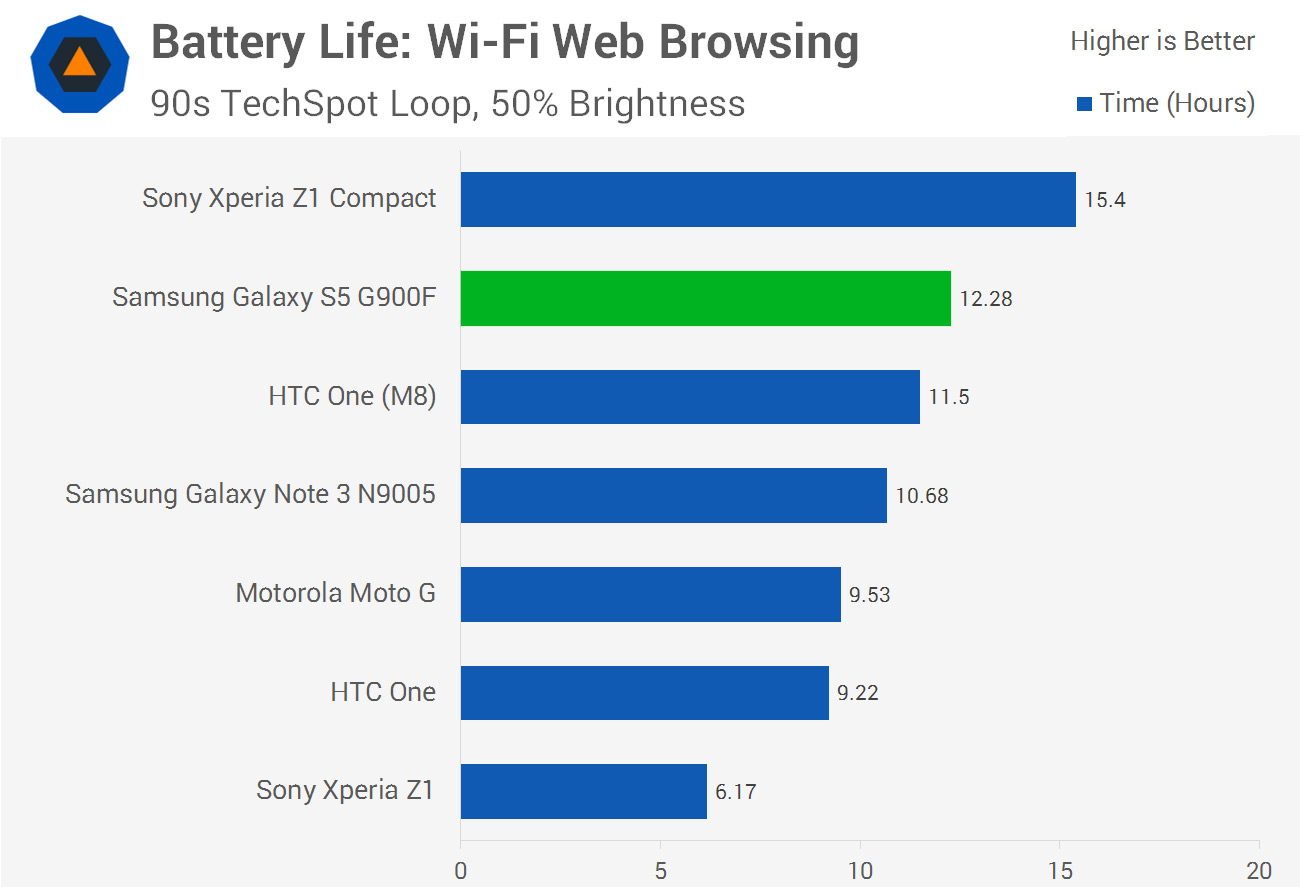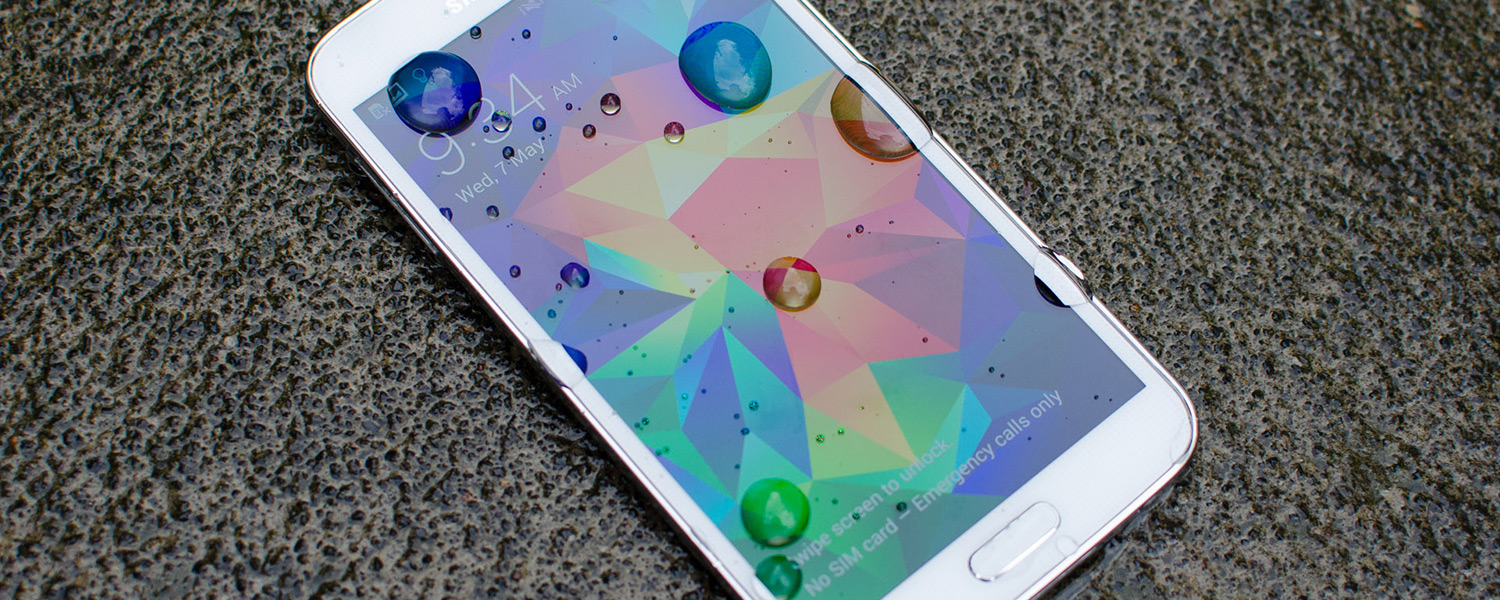Battery Life
The Galaxy S5 is blessed with a 10.78 Wh (3.85 V, 2800 mAh) removable battery, which can be accessed underneath the rear cover. The battery itself is long and slim, but as you'd expect it provides a significant portion of the device's weight. Charging is performed by the S5's 10 watt (2A) charger included in the box, which supports Qualcomm Quick Charge. Wireless charging is possible with the Galaxy S5, but as I mentioned earlier you'll need to purchase the Qi-compatible Wireless Charging S-View Flip Cover separately.
The battery capacity of the Galaxy S5 is only a slight (9%) increase on the Galaxy S4, indicating Samsung aren't trying to push for longer battery life, but to cover the extra power requirements of some of the new components such as the larger display. Due to improvements on Qualcomm's side, the Snapdragon 801 should actually be more power efficient than the Snapdragon 600 despite an increase in performance, so there's the possibility we might see better battery life.
However, during my time with the Galaxy S5, I tended to get good battery life, but nothing amazing and, from memory, right on par with the Galaxy S4. I was disappointed that one time during a long day away from my desk I managed to flatten the battery, although most other times I finished a day with around 30% capacity remaining. If you play games during the day or use the camera frequently, you'll experience lower battery life.
For those of you who want a quantitative view on the Galaxy S5's battery life, below you'll find our most comprehensive selection of smartphone battery tests yet.

In our video playback test, the Galaxy S5 performs extremely well thanks to the power efficient SoC and improvements to the display's power consumption. These days decoding a 720p video is far from hard work, and each generation we see decent gains here: the S5 lasts 52% longer than the S4.

Looking at results for Wi-Fi web browsing, and the Galaxy S5 performs as expected. With the same SoC as the HTC One M8, the Galaxy S5's 7% advantage here most likely comes from the 9% larger battery and a slightly more efficient display.

Browsing in LTE reverses the advantage, putting the HTC One M8 ahead by 2%. Results like this can be put down to testing discrepancies, and in real world usage you'll find both devices perform equally well.

Results in GFXBench are quite funny, because the Galaxy S5 crushes the HTC One M8. I'd put this down to the HTC One M8's aggressive governor that's designed to cheat at benchmarks, wasting CPU clock cycles throughout the duration of the looping benchmark. Real-world results would likely put the two devices closer.

Thanks to Qualcomm Quick Charge support, the Samsung Galaxy S5 can charge fully in a short period of time. A 10W charger is included in the box, so I'd expect a charge time of nearly exactly what is listed above.
The Galaxy S5 packs an Extreme Power Saving Mode, which turns the display black and white while turning off all major features and restricting access to just a few critical applications. I'm not convinced turning an AMOLED display to black and white will save battery as the PenTile matrix still needs to power on to display shades of grey, however restricting usage to a subset of the device's features does give notably longer battery life.
I wouldn't keep the mode on all the time, as the device essentially turns into a featurephone, but it's useful to have when your battery is running low.

